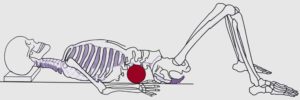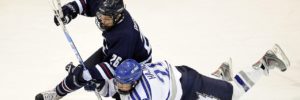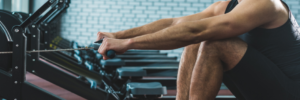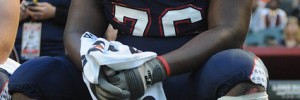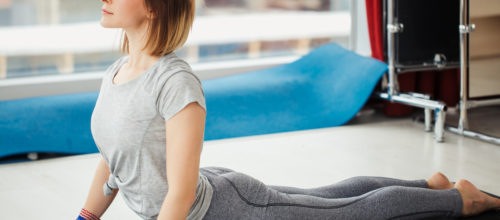
Things You Need to Know About The McKenzie Press-Up
The McKenzie Press-up. Also, known as the “Sloppy Push-up” or “Cobra Stretch” is an exercise I often get questions about; People with low back pain, more specific — disc bulges ask about this exercise.
Physical therapist Robin McKenzie introduced the McKenzie Press-up as part of a series of exercises to combat low back pain. And it’s an exercise I was recommended to perform for my low back issues (L5-S1 disc protrusion and facet joint osteoarthrosis). Medical doctors, physical therapists, chiropractors, personal trainers and people with previous back injuries all advocated about this exercise.
But.
It wasn’t an exercise I responded too well.
Upon my first few attempts — I found the McKenzie Press-up made my low back pain worse. Repeatedly going into end-range extension did not feel good.
I didn’t know how to react since everyone was recommending this exercise.
I asked myself.
“Why is this exercise making me feel worse when everyone is recommending it?”
It didn’t make sense.
And no one could explain “why” it was making me feel worse.
Instead of continuing to make my back pain worse by performing the McKenzie Press-up — I stuck too prone-lying with a pillow under my hips. I found this position to be the most comfortable, and it provided me with significant pain relief.
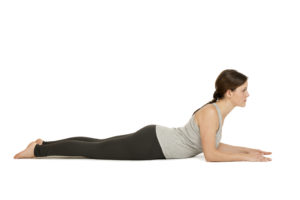
Note: Prone lying is part of the McKenzie Method and a regression to the McKenzie Press-up. Looking back at the people recommending the McKenzie Press-up — I would say they weren’t educated properly on the McKenzie Method. Image licensed from “Fotandy/depositphotos.com.”
Fast forward to 2015; the year I started sharing my story on YouTube. After creating a handful of video’s explaining how the McKenzie Press-up made my low back pain worse — I realized I wasn’t alone.
Others started to comment on my YouTube video’s sharing a similar experience about how the McKenzie Press-up made their low back pain worse.
And at that moment I realized something is wrong.
Part of me knew that repetitive lumbar extension (McKenzie Press-ups) could be an issue after reading multiple blog posts from Eric Cressey in 2014 on preventing extension-based back pain; however, I didn’t quite see the full picture until I read Dr. Stuart McGill’s book — Low Back Disorders 3rd. Edition.
In the book, there is a small section covering the topic of McKenzie rehab exercises(1). First, a research study citing how the McKenzie Press-ups (extensions) only work in intervertebral discs with 70% of their disc height or more remaining (1,2). Anything below 70% in disc height results in a failure of the McKenzie Press-up to work (2).
This research study by McGill & Scannell (2009) is the first I’ve seen to contradict the McKenzie Press-ups for people with disc bulges. Sure, some people may improve performing them, but if you have a loss of disc height of 70% or more — you’re perhaps not going to see benefits. Note: With a loss of disc height — the facet joints may limit the extension needed to reverse the bulging nucleus.
While McGill & Scannell’s research on the McKenzie Extension theory and disc height is interesting — Dr. McGill shares how repeating the McKenzie Press-ups could irritate the facet joints (1).
I thought this was a great point.
Because when a person performs a McKenzie Press-up — they’re placing a high force onto the facet joints. And if a person doesn’t know what is causing their low back pain and they have facet joint osteoarthrosis — they may irritate their facet joints by performing McKenzie Press-ups.
Something that you can say happened too me. I had a loss of disc height and facet joint osteoarthrosis — making me not an ideal candidate for the McKenzie Press-up.
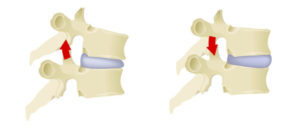
The above photo represents the change in the facet joint position when the spine flexes (left) and extends (right). Remember the facet joints resist extension. Image licensed from “AlexeyBlogoodf/depositphotos.com.”
Another consideration is the shape of a person’s disc. Limacon (kidney-shaped) discs respond well to McKenzie extensions, but oval discs don’t (2,3). The mechanics are going to differ for each disc shape, and the oval disc shape — being diffuse (lose disc height) may make it harder to reverse the nucleus.
Also, when performing the McKenzie Press-up — one could perhaps increase the size of a disc bulge (push nucleus out) or alter the mechanics of the spine (nerve moves closer to disc bulge) in a way that may put pressure onto a nerve root — triggering radicular symptoms.
Considerations for the McKenzie Press-Ups
When performing the McKenzie Press-ups without any previous diagnosis or spinal imaging — I’d argue it’s like playing roulette. You don’t know if you’re going to win (feel better) or lose (feel worse or nothing) until you perform the McKenzie Press-up.
From my experience, others, and Dr. McGill’s work — we know that McKenzie Press-ups don’t work for everyone. Sure, they work for some people, but it’s incredibly difficult to tell unless you try them or have some form of spinal imaging done on your lumbar spine.
My suggestion is to proceed with caution if you’re going to attempt the McKenzie Press-ups and seek out guidance from a medical professional who is familiar with Robin McKenzie’s Mechanical Diagnosis and Therapy (MDT) and Dr. McGill’s research.
Final Note
Don’t be like me and jump on the McKenzie Press-up bandwagon. Just because people are recommending this exercise for low back pain doesn’t mean they have the proper education or qualification to do so. Yes, McKenzie Press-ups do work, but they only work for some, and perhaps could come at a price (facet joint irritation). I always found prone-lying to be most beneficial, and I think others would as well!
Cheers,
Remi
References
1. McGill, S. M. (2015). Low back Disorders (3rd ed). Windsor, ON: Human Kinetics.
2. Scannell, J. P., & McGill, S. M. (2009). Disc prolapse: Evidence of reversal with repeated extension. Spine, 34(4), 344-350.
3. Yates, J. P., Giangregorio, L., & McGill, S. M. (2010). The influence of intervertebral disc shape on the pathway of posterior/posterolateral partial herniation. Spine, 35(7), 734-739.
Thumbnail Image licensed from “ufabizphoto/depositphotos.com.”





